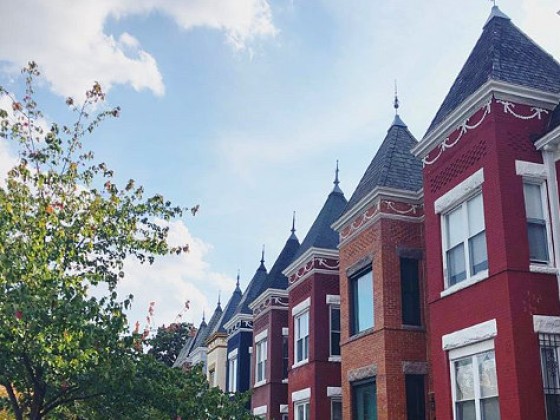 Co-ops for Dummies
Co-ops for Dummies

In light of our most recent Pursuit, where UrbanTurf publisher Will Smith wrote about his experience of finding and buying a co-op in Lanier Heights, we thought we would re-run a primer on the ins and outs of co-ops, which we first published in May of 2012.
If you’re looking to buy a home in a multi-family building in the DC area, chances are you’ve come across a number of co-ops. While less common these days, co-ops actually predate condos, emerging around the turn of the century. (Condos entered the scene in 1946.)
Basically, buying a co-op means you are buying a share in a corporation that owns the entire building, rather than buying the individual unit itself (which is what a condo is). A co-op association/board wields more power than a typical condo association, and financially, co-op owners usually finance a smaller portion of the purchase price than that of condo owners, while paying higher monthly fees.
Buildings where co-ops are located tend to pursue a higher owner-occupancy rate than condo buildings and may prevent owners from freely renting or renovating their homes, a restriction many potential owners find troubling. The co-op board can also seem like an undesirable hurdle to getting into your home. In many cases, these boards interview, vet, and can block each potential buyer.
Next are the higher association fees. These fees are often, fairly or unfairly, the reason that buyers shy away from co-ops. The main difference between co-op fees and condo fees is that a co-op fee typically includes an underlying mortgage and property taxes, in addition to amenity, maintenance and utility costs, which makes the fees notably higher on a co-op. Prices on co-ops are often discounted to offset these high fees. For example, a studio in Southwest, while listed at the appealing price of $139,999, carries an association fee of $703 per month. In comparison to condos, however, many co-ops boast lower closing costs, since there is no transfer tax (because there was no title to transfer). While an attractive aspect, a couple years ago the city tacked on an economic interest tax on the sale of co-ops.

A co-op at 2122 California Street NW
This leads us to another element of co-op ownership, a confusing one, but something that will bring down a buyer’s initial outlay. Dominic Turano of First Home Mortgage explained that co-op buildings often have an underlying mortgage that exists either from the original financing of the building or from a mortgage that was taken out to fund improvements. The corporation takes on the debt, and each owner pays some portion every month, proportional to the size of their unit. The taxes and interest on this underlying mortgage are tax-deductible.
What this means for a buyer purchasing a co-op in a building that has an underlying mortgage is that, during the purchase process, they will be financing significantly less than the purchase price. For example, if you are buying a $300,000 unit and $130,000 of the price is the underlying mortgage, then the down payment you make would be a percentage of the remaining amount of the purchase price. In this case that would be $170,000, meaning that you would only need to pony up $17,000 if you were putting 10 percent down. Generally, information about the amount of the underlying mortgage is disclosed early on in the buying process.
Hopefully, this primer will be a helpful starting point when comparing co-op ownership to condo ownership.
Co-op owners, can you add any advice from your own experience to help UT readers who may be considering a co-op purchase?
See other articles related to: co-ops
This article originally published at https://dc.urbanturf.com/articles/blog/coops_for_dummies/5541.
Most Popular... This Week • Last 30 Days • Ever

DC's homebuyer assistance programs can be a bit complex. This edition of First-Timer ... read »

When it comes to financing a home purchase, a 30-year mortgage is one of the most com... read »

Pocket listings are growing in popularity in the low-inventory market in the DC regio... read »

Plans for the development at a prominent DC intersection began nearly eight years ago... read »

The eight-bedroom, 35,000 square-foot home in McLean originally hit the market in 202... read »
DC Real Estate Guides
Short guides to navigating the DC-area real estate market
We've collected all our helpful guides for buying, selling and renting in and around Washington, DC in one place. Start browsing below!
First-Timer Primers
Intro guides for first-time home buyers
Unique Spaces
Awesome and unusual real estate from across the DC Metro















